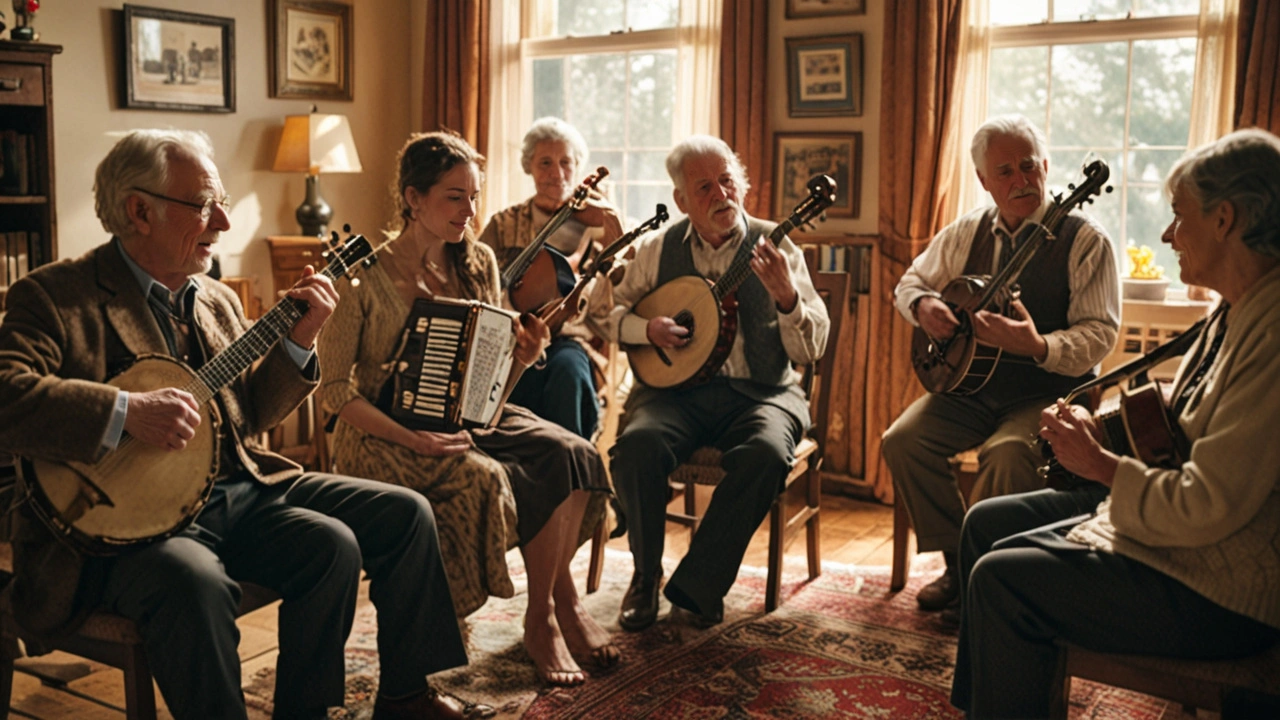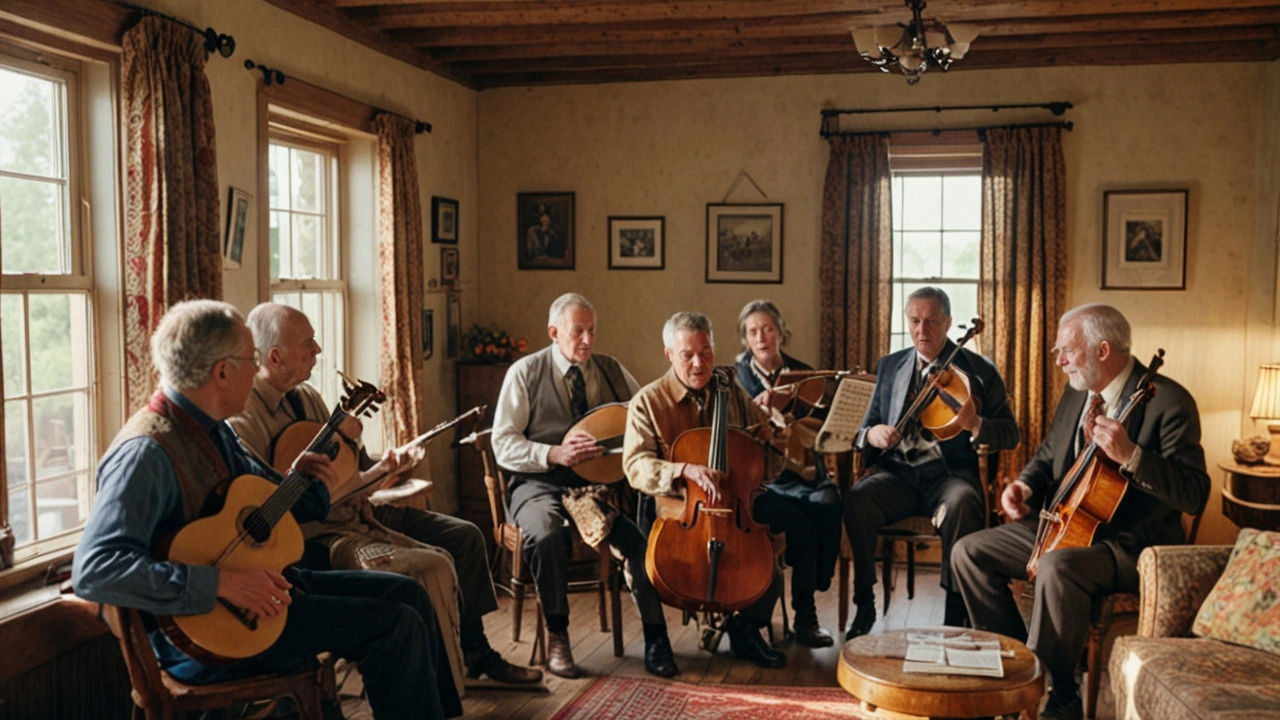Folk music holds a special place in the heart of cultures around the world. These are the songs that reflect the lives, struggles, joys, and aspirations of the people who create them. Spanning countless centuries, folk music tells stories of times long past and carries the essence of our shared human experience.
By preserving folk music, we do more than just save old tunes; we keep alive the links to our ancestors and retain the richness of cultural diversity. From heartfelt ballads to lively jigs, each genre of folk music offers a unique window into the traditions and lifestyles of communities.
Join us as we delve into the historical roots of folk music, its enduring essence in today’s world, and discover ways each one of us can ensure this musical heritage continues to thrive for future generations.
- The Historical Significance of Folk Music
- The Role of Folk Music in Modern Times
- Diverse Traditions and Styles
- How to Preserve Folk Music for Future Generations
The Historical Significance of Folk Music
Folk music is more than just simple melodies strummed on old guitars or sung around campfires; it's the soundtrack of humanity's shared journey. The roots of folk music stretch back to times even before written records. This genre emerged as a communal form of storytelling, a way to pass on important traditions, knowledge, and values. Whether it was through heroic ballads sung by medieval troubadours or work songs from the fields, folk music has always been deeply intertwined with the daily lives and struggles of ordinary people.
Folk music's historical significance is profound because it provides an audio diary of past generations. Songs often documented significant events—be it a great battle, a tragic love story or a moment of social upheaval. For instance, in Britain, folk ballads told tales of medieval knights and later became the vehicle for the political sentiments of common folks. In America, African American spirituals, work songs, and blues served as both an emotional outlet and a coded means of communication during the times of slavery. Such songs were instrumental in preserving a sense of identity and resilience in the face of immense adversity.
The communal nature of folk music also helped to cultivate a strong sense of identity within communities. These songs were not typically written by professional musicians but were born out of collective experience. They were passed down orally through generations, often with each performer adding their own twist to the song. This made folksongs very dynamic, reflecting the continuous evolution of the communities they belonged to. Folk dances and music from regions like Ireland, Scotland, and Wales encapsulate not only the unique sounds but also the social customs of these cultures.
A remarkable aspect of folk music is its ability to travel and adapt. Migration, trade, and conquest spread these songs far and wide, which often resulted in the blending of different musical traditions. The Silk Road, for example, was not just a trading route for spices and silk but also for cultural exchange. Melodies and rhythms from the East found their way into European folk music and vice versa. This cross-pollination enriched the musical landscape, breaking down cultural barriers and fostering a greater understanding between different peoples.
"Folk music is the original melody of man; it is the musical mirror of the world." - Friedrich Nietzsche
Folk music's historical importance is further accentuated by its role in social movements. In the 20th century, folk music was pivotal in civil rights, anti-war, and labor movements. Artists like Woody Guthrie, Pete Seeger, and Bob Dylan used their music as a tool for social change, their songs becoming anthems that rallied people to action. The simplicity and relatability of folk music made it a powerful medium to convey complex social and political messages.
Understanding the historical significance of folk music helps us appreciate its true value and underscores why preserving this genre is vital. It's not just about saving old songs from extinction; it's about maintaining a living connection to our collective past, ensuring that future generations can hear and learn from the voices of those who came before them. Embracing folk music today means keeping these invaluable stories and traditions alive, continuing the age-old tradition of communal storytelling through song.

Diverse Traditions and Styles
Folk music is a fascinating reflection of the world’s cultural diversity, embodying a wide array of traditions and styles that span continents. In Europe, for instance, you can hear the soulful strains of Irish ballads, which tell tales of love and loss, rebellion and unity. In Spain, the passionate rhythms of Flamenco capture the intensity of life through intricate guitar and dance moves. Each region offers its unique interpretation and flavor, making folk music a rich mosaic of human expression.
Heading east, the distinctive sounds of Chinese folk music incorporate instruments like the erhu and guzheng to create a sonic landscape quite different from the west. These ancient instruments have been used for centuries to accompany stories, rituals, and festivals. Similarly, Indian folk music, with its droning tambura and lively tabla, offers a spiritual experience, often intertwined with religious ceremonies and traditional dances.
Across the Americas, folk music is equally varied. North America has the blues, born from the African-American experience, full of emotion and history. Traditional Native American music employs drums and flutes to connect to the spiritual world, often used in ceremonies and communal gatherings. In contrast, Latin America's folk music, like the Andean melodies played on panpipes and charangos, reflects a deep connection to nature and the land. These musical traditions are not just art forms but are woven into the daily lives and identity of the communities.
Australia has its own unique contributions to folk music. The Indigenous music, with instruments like the didgeridoo, speaks of connection to the land, ancestral stories, and Dreamtime legends. Australian folk music also includes the bush ballads of early settlers, recounting the rugged life and pioneering spirit. Whether gathered around a campfire or in a community hall, these songs bring people together, reminding them of their roots and shared heritage.
“Music touches us emotionally, where words alone can’t.” - Johnny Depp
To truly appreciate folk music, one must consider not just the sounds but the contexts in which they evolved. Different regions have their own unique dance forms, clothing, and languages that complement the music. Take Scotland's Highland games, where bagpipe music accompanies feats of strength, or Mexico's Day of the Dead celebrations, vibrant with traditional songs honoring those who have passed. These events and practices are inseparable from the music itself, constituting a holistic cultural experience.
As globalization continues to blend cultures and traditions, the importance of preserving these diverse styles of folk music only grows. They offer a sense of identity and continuity, connecting younger generations to their heritage. In an age where pop culture often dominates, these traditional forms offer an alternative narrative, one that speaks of resilience, community, and history.
| Region | Style | Instruments |
|---|---|---|
| Europe | Irish Ballads | Harp, Violin |
| Asia | Chinese Traditional | Erhu, Guzheng |
| Americas | Blues | Guitar, Harmonica |
| Australia | Indigenous | Didgeridoo |
By respecting and celebrating the diverse traditions and styles in folk music, we keep these rich cultural tapestries from fading into obscurity. Each tune, rhythm, and lyric offers insight into human life and experience, making folk music an invaluable cultural treasure worth preserving for generations to come.

How to Preserve Folk Music for Future Generations
Ensuring the survival of folk music for future generations requires thoughtful effort and a sense of community. One way to start is by immersing oneself in local folk music traditions. Attend community events, festivals, and live performances that showcase folk music. Engaging with these events not only supports the artists but also provides an authentic experience of the genre. Take Leon and Giselle, for example; a weekend spent at the National Folk Festival in Canberra turned out to be both educational and entertaining for them.
Recording and archiving folk music is another critical step. Modern technology presents us with unprecedented opportunities to capture and store musical performances with high fidelity. For instance, initiatives like the Australian National Library's 'Trove' digital collection play a significant role in preserving oral traditions. Digitization ensures that folk music will be accessible to future scholars, musicians, and enthusiasts. Many private collectors and smaller organizations also contribute richly to these archives by constantly updating their collections.
Education plays a vital role in the preservation journey. Schools and universities should include folk music in their curricula to expose students to different musical traditions early on. Offering courses that cover the historical context, instrumentation, and lyrical content of folk songs helps cultivate a deeper appreciation. By tapping into this early, kids learn to see the value in these time-honored traditions. Learning a folk instrument or even participating in a local folk music group can provide hands-on experience, bolstering one's connection to the genre.
Community involvement remains a cornerstone in preserving folk music. Establishing folk music societies or clubs allows enthusiasts to share their knowledge and resources, while also providing platforms for emerging folk artists. Communities can organize workshops that teach traditional folk instruments like the banjo, fiddle, or accordion. All ages can participate, ensuring the continuity and adaptation of these traditions over time. Such activities encourage young people to embrace and ultimately pass down these rich legacies to coming generations.
Intentionally integrating folk music into modern media also plays a crucial role. Documentaries, podcasts, and even social media channels dedicated to folk music can significantly widen its reach. When folk songs find their way into films, TV shows, and advertisements, they gain new audiences. These mediums allow creators to blend traditional sounds with contemporary styles, making folk music both relevant and relatable to today's audience. It's fascinating to see how songs from rural villages can find a new life in an urban setting.
“Folk music is not a relic. It's a living, breathing part of our cultural identity.” - Anna Lomax Wood, a prominent anthologist.
Finally, supporting folk artists is indispensable. Buying their music, attending concerts, and spreading the word about their work sustains not just the artists but the art form itself. Crowdfunding platforms offer new ways to directly support folk musicians in producing and sharing their music. Helping artists thrive economically ensures that more people will continue to create and innovate within the genre.
By taking these measures, we can ensure that folk music will not only survive but also thrive. It's up to all of us to play our parts in preserving this invaluable cultural resource for those who come after us.

